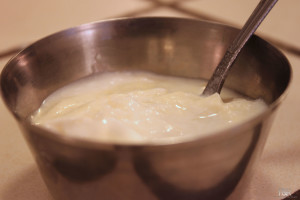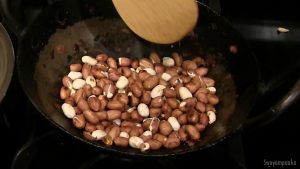Have you ever wondered what is the difference between curd and yogurt?
Yogurt and curd are both dairy products that are similar in taste, texture, and preparation methods, but they can sometimes have slight differences based on regional variations and production processes. The terms “yogurt” and “curd” are often used interchangeably in some countries, while in others, they might refer to slightly different products. Here’s a general overview of the differences:
- Names and Regions:
- “Yogurt” is the more commonly used term in Western countries and is associated with products from Europe and North America.
- “Curd” is a term more commonly used in India and some other Asian countries to refer to a similar dairy product.
- Starter Cultures:
- The primary difference between yogurt and curd lies in the starter cultures used to ferment the milk. Yogurt is traditionally made using specific bacterial strains such as Lactobacillus bulgaricus and Streptococcus thermophiles. These cultures are standardized and defined.
- Curd, on the other hand, might be made using various strains of bacteria present in the environment or from a small amount of previously prepared curd. This can lead to more variability in taste and texture.
- Production Process:
- The production process for both yogurt and curd involves heating milk to a specific temperature, then allowing it to cool slightly before adding the starter culture.
- In yogurt-making, the milk is heated to a higher temperature (usually around 180°F or 82°C) to denature the proteins and create a thicker texture. The milk is then cooled before adding the starter culture.
- In curd-making, the milk is heated to a lower temperature (typically around 110°F to 120°F or 43°C to 49°C) to maintain a more liquid consistency.
- Taste and Texture:
- Yogurt tends to have a smooth and creamy texture with a slightly tangy taste. The texture can range from runny to quite thick, depending on the specific yogurt type.
- Curd can have varying textures, from quite liquid to a bit thicker. Its taste can also vary, ranging from mildly tangy to quite sour, depending on factors like the bacteria present and fermentation time.
- Nutritional Content:
- Yogurt and curd have similar nutritional profiles, both being good sources of calcium, protein, and probiotics. Probiotics are beneficial bacteria that can aid in digestion and promote gut health.
In summary, while yogurt and curd are similar dairy products with overlapping characteristics, the primary differences lie in the specific bacterial strains used as starter cultures, the production processes, and the regional names and preferences. The choice between yogurt and curd often depends on cultural practices and personal preferences.



